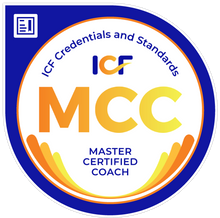
Why the best strategic leaders are emotional
Emotions can catalyze more creative thinking and help you develop strategies that meet the moment
What word comes to mind when you think about strategy development? Probably not emotion.
Strategy is often a dry, analytical exercise led by the few at the top of an organization and broadcast to the rest of the organization in long, turgid presentations. It’s no wonder that few strategies work. Many ignore how emotions influence creativity, decision-making, problem-solving, and motivation. Ignoring or dismissing human emotions when developing or executing strategy leads to ineffective or unsustainable approaches that often fail to resonate with stakeholders or motivate them to action.
To improve the quality of your strategies, you must harness the power of emotions in each phase of strategy development. Here are five ways to do this:
EXPLORE YOUR CUSTOMERS’ NEEDS
Developing a new strategy requires identifying your customers’ underlying motivations and desires and imagining new possibilities to delight them. You can’t do this effectively if you’re solely head-down in your computer crunching numbers.
For example, many people care deeply about protecting the environment and reducing their carbon footprint. The companies that first understood this emotion were able to launch a range of lucrative eco-friendly products and implement corporate social responsibility programs that boosted employee and customer loyalty.
Ask yourself how well you understand your customers’ needs, wishes, and expectations. Your strategy will miss the boat unless you deeply understand what they think and feel. Why are customers coming to you now? What can you do to develop a personal connection that instills loyalty beyond reason? What frictions—such as poor packaging, delivery, and after-sales care—could get in the way of your customers feeling delighted?
SPARK IMAGINATION
The best strategies are not created in a vacuum. Instead, they often come from the intersections of disparate ideas from outside sources of inspiration, such as other industries, ecosystems, or domains such as the arts and sciences.
Ideas also come from your interactions with others, so long as you create a generative climate where people feel psychologically safe to push against the status quo and share their ideas with you. To spark imagination as you develop strategies, you must override fear and people’s natural inclination to self-protect.
Encourage people to generate multiple ideas and options rather than provide one fully baked approach. Imposing an idea quota—a predetermined number of ideas—can stimulate creative thinking and prevent people from writing off out-of-the-box ideas. Failure can also stimulate creativity, so work to create a team culture of experimentation in which people feel safe to make and share mistakes.
Just as powerful emotions like love or anger may inspire an artist to create a painting or a writer to compose a poem, emotions can catalyze more creative thinking and help you develop strategies that meet the moment.
ANTICIPATE FEELINGS WHEN MAKING DECISIONS
Making strategic choices is hard when faced with considerable uncertainty, constraints, competition, and expectations. It can evoke strong emotions that impact your decision-making ability when you need a clear head. Stress can result in myopia and restrict the range of options under consideration, overconfidence can lead to big bets in uncharted territory, and impulsiveness can lead to hasty decisions that are soon regretted.
Reflect on your emotions and reactive tendencies when making decisions, and implement mechanisms that mitigate their impact. For example, surround yourself with people who have different skills, expertise, and styles and are unafraid of challenging you. Never go it alone. Allow more time in the process to allow for proper interrogation and fresh insights. Frame conversations thoughtfully to encourage proper inquiry, challenge, and dialogue.
INSPIRE PEOPLE TO TAKE ACTION
If you want your organization to rally behind a strategy, you must create widespread belief in a better, brighter future and credibility in the choices that will help you get there. Sound logic and structured arguments create a foundation of trust but they’re not enough to inspire action. You must also grab peoples’ hearts.
Tap into people’s emotions by describing the opportunities ahead in vivid detail and what they mean for the organization and individuals involved. Explain the reasons for a change in strategy and the implications of not changing the status quo. Use visualization in the form of pictures, photos, or stories to help people imagine what success will look like. Disclose your own motivations and aspirations, conveying your commitment to the cause. Create pilots to test new approaches and build trust before scaling them across the board.
SUPPORT PEOPLE TO OVERCOME THEIR FEARS
To create momentum behind a new strategy, empower people to decide how they want to contribute. In times of anxiety, trying something new and giving up something familiar feels risky because loss aversion kicks in. To overcome this, explore what might be holding you back, such as the fear of failing or a lack of trust in your coworkers and boss to support you.
Ask members of your team to answer the following questions, one by one: What will help you most contribute to the strategy? What choices do you feel you have? What’s going to hold you back? Invite coworkers to share their suggestions on how each person can overcome the fears they share. Put in place support that will help them overcome these fears, such as on-the-job training, development programs, or coaching.
Harnessing emotions can be an asset as you develop and implement strategy, helping you understand the needs and motivations of your customers, ensuring high-quality decision-making, and inspiring your team and organization to rally behind a new direction.
David Lancefield is a catalyst, strategist, and coach to C-suite leaders in companies such as the BBC, Microsoft, and The Guardian.
Dina Denham Smith is an executive coach and the founder of Cognitas, a leadership coaching and consulting firm. Her clients include senior leaders and teams at companies such as Adobe, Netflix, and PwC.




